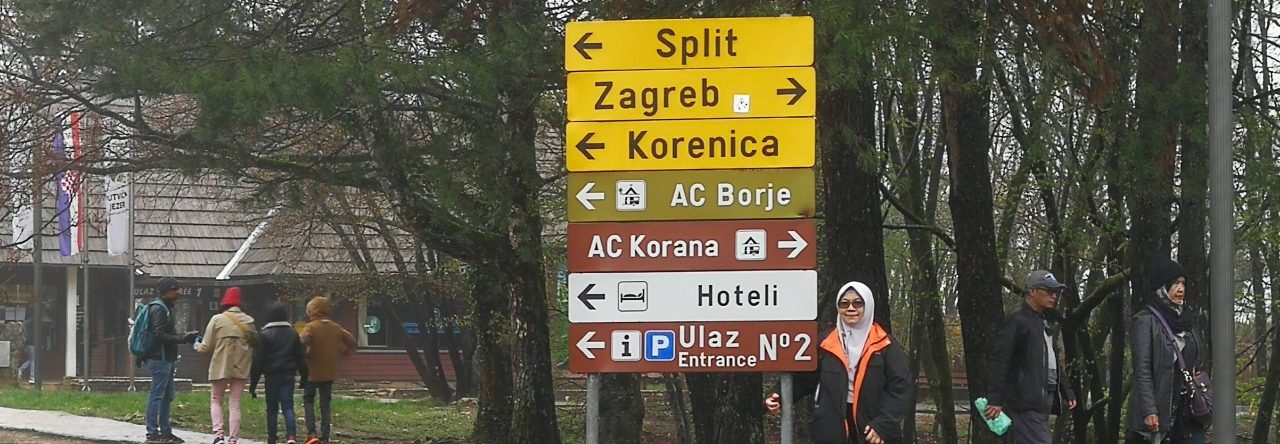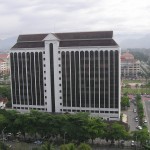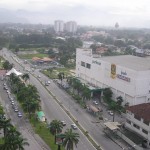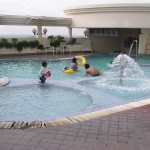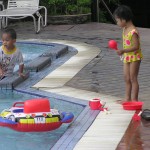26/6/2009:
Today I was alone and had no concrete plan for the day, apart from working on this blog. After Zuhur prayer at regular Kokhine masjid along Kabaye Pagoda Road, I took another road less traveled (by tourists). The road snaked up to the north of Yangon City. My destination is Insein, one of 47 or so townships in Yangon. Insein is infamous for its prison, the largest prison in the country. My driver said he would not drive a foreigner there unless I promised him one thing — no taking photos. I said hoge (okay) and he agreed. Thats why no photos in this post. Has he been there? I asked him. He said he has been there visiting his businessman friend two years ago, who was accused and found guilty of bringing in car spare parts from Thailand thru land border without permit (read: smuggling). He went further to tell how his friend managed to get out from the prison earlier, and his viewpoints on politics in Myanamr. I could not share his story in this blog.
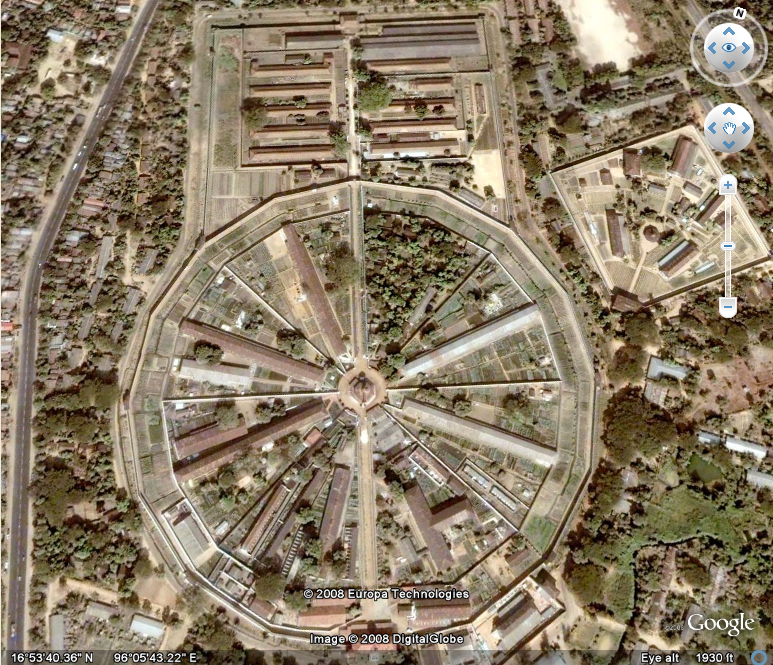
Myanmar's Insein prison
Insein is a lively place indeed, crowded area with bustling activities on this cool Saturday morning. Open tea-shops with men in loungyi chatting and laughing. Roadside traders displayed their merchandise on the ground mainly imported items from northen neighbor — China. On the street, everybody is moving minding their own business, which means an economy is working. Looking at their faces, you can tell they are laboriously hardworking, skinny but fit. Women and children are moving around innocently, on and below the bridge, above the railway track. Unlike me and my colleagues in the workplace who are concerned so much about the fluctuation of oil price and global financial meltdown, they are not. They are simple souls, shielded from global financial crisis, thanks to the government’s economic policy.
The prison is huge complex and sprawling in many directions, away from the township center, in a rectangular shape. After driving around the four corners of the prison, you can tell easily the prison area eats up most of Insein business district. Staff quarters and other buildings are all inside, divided by layers of walls to ensure escape is impossible. The backside outer wall is parallel to the Myanmar railway line, connecting Insein and towns to the north to Yangon city center. You have to cross the track to get in thru that entrance, normally used by staff and family members.
At the time of this writing — the world news media like CNN and BBC are zooming their spotlight on this prison, currently the home for Daw Aung San Suu Kyi, pending a trial for the crime against the state. BBC called it the most notorious prison in the whole Myanmar.
The main entrance is from the main street in Insein and is labeled positively CORRECTION CENTER. If you go around, other entrances carry British-like signs CENTRAL PRISON or simply CENTRAL JAIL. There were flurry of activities — selling and buying — around the main entrance. If BBC reporter sees the main entrance, he might not have an idea about this prison, unless he follows the high brick wall snaking around until where it ends.
Sorry, no pixs on Insein prison, except from BBC above. You can also view this circular prison from aboard any flight departing Yangon Onternational Airport, when the aircraft is still ascending, because the prison is located in the flight path. Looking down you cannot miss this very noticeable eerie structure.
Anti-tourism declaration.
